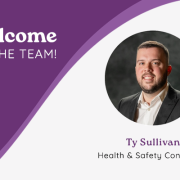
If you plan to leverage a health risk assessment to get a better understanding of your workforce’s physical health, you’ll likely find that the majority of health issues affect two groups of people: those who smoke and those who have dietary and weight issues.

Smoking
From a wellness standpoint, the difficulty in helping smokers kick the habit lies with getting people to actually want to quit.
At The Lawson Group, we implement smoking cessation programs that help employers give their employees a fighting chance against addiction.
A true testament to our expertise is that we have a higher-than-average smoking cessation rate compared to many other similar programs.
Dietary & Weight Issues
For those in your worker population, with dietary and weight issues, routine exercise and healthy eating habits must be established and emphasized in your wellness strategies.
A common coupling, we typically find that the people in a population with weight issues also boast higher blood pressure, and cardiac issues, are diabetic or pre-diabetic or have joint problems. The reality of these related ailments makes dietary and weight issues a more difficult area to address as the solution calls for huge lifestyle changes in terms of diet and exercise.
In order to make these changes a bit easier, The Lawson Group offers customizable wellness programs that help address employee health risks and improve productivity and morale. All of our programs are designed, administered, and supported by our local team of wellness experts to facilitate in-person, online, one-on-one, and group consultations.

The Importance of Realistic Goal Setting
After using the health risk assessment, you’ll be able to analyze the overarching issues that your workforce population has as a whole and be able to design individual goals and objectives for people on a one-off basis.
Whether it’s identifying the steps to lose “x” amount of weight or participating in a smoking cessation program, each person’s wellness journey must be viewed as unique.
It’s important to understand that completely mitigating these at-risk behaviors is not easy and doesn’t happen overnight. In fact, we typically find that when first trying to implement a wellness program, you’ll be lucky to get 10-15% of your population engaged.
Once people begin showing significant weight loss or are able to quit smoking, you’ll notice that your program will begin gaining real traction. Your employees will begin to realize the financial benefit of living well by saving on medications and monthly copays.
Oftentimes, it’s seeing their peers succeed that serves as a trigger for other employees to become engaged in the process.
About The Lawson Group
Since 1978, The Lawson Group has been in the “White Horse” business. That is to say, we help companies do things that are ultimately good for them that they are sometimes not aware of. Our primary effort is to work with employers and their employees to make better use of their health insurance dollars by working to help them become healthier and better consumers of healthcare.
We welcome your inquiries regarding our services. Contact us to learn more.







